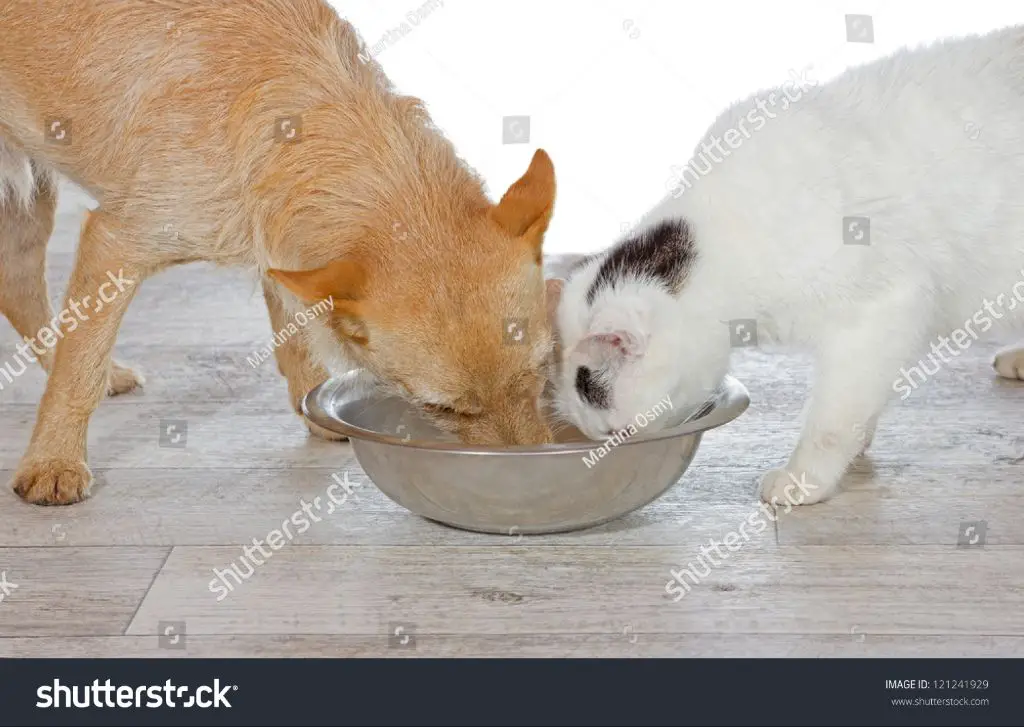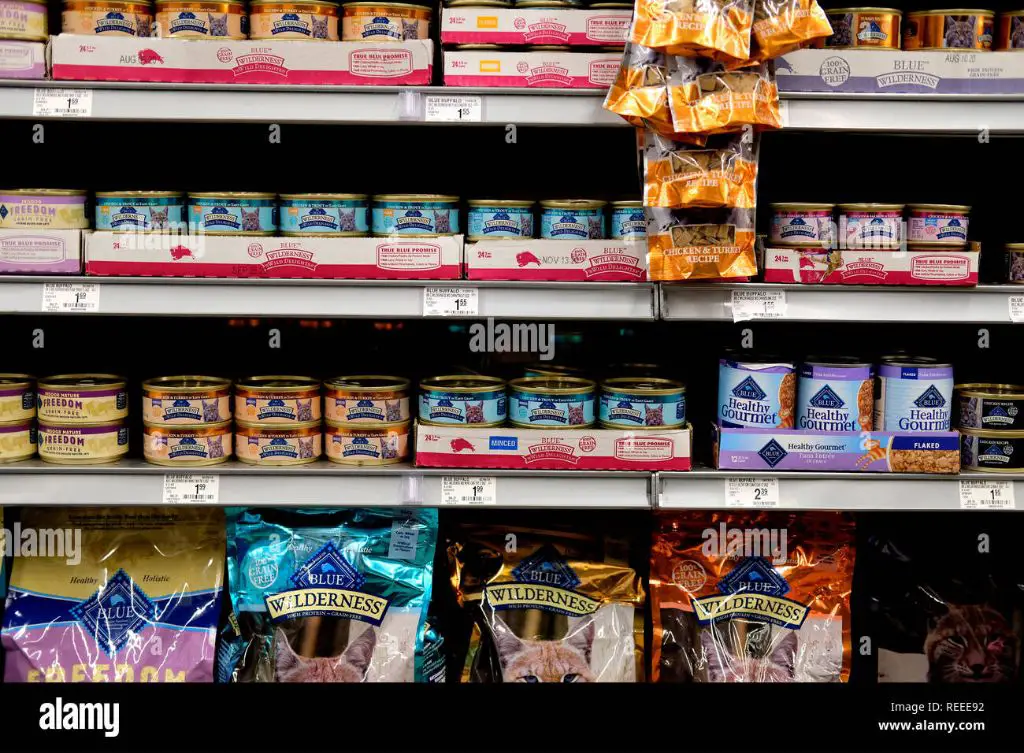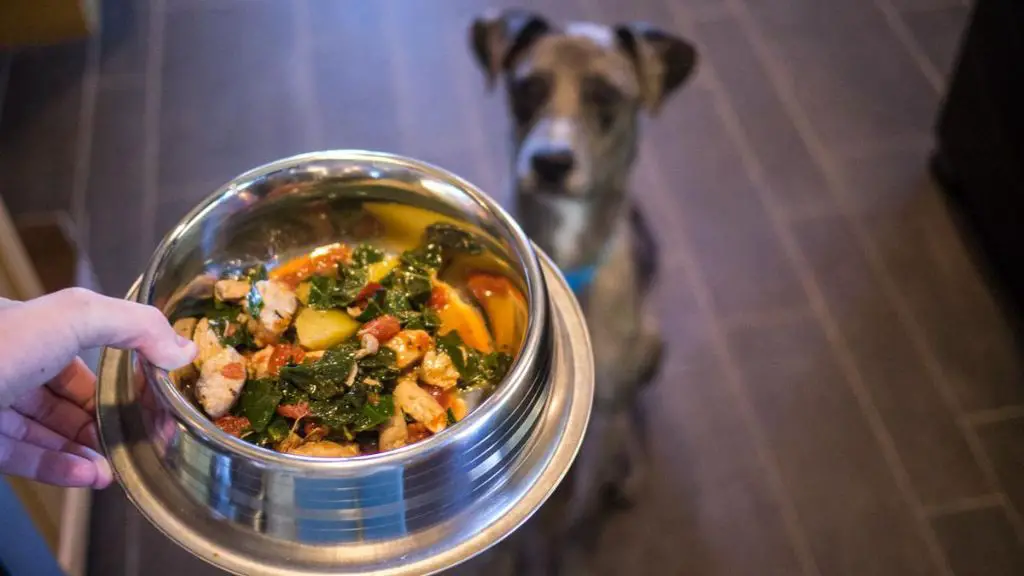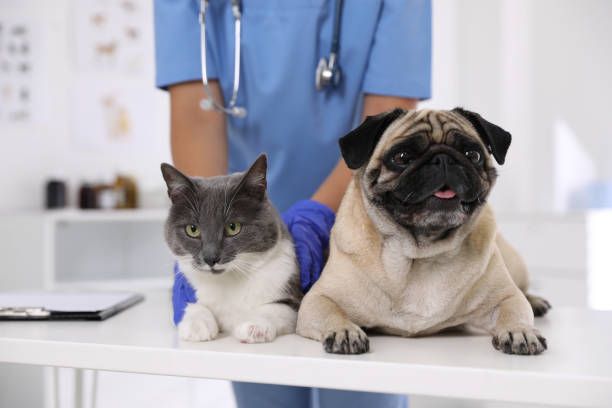Introduction
Many pet owners want the convenience and cost savings of feeding just one food to both their cats and dogs. However, cats and dogs have very different nutritional needs due to differences in their biology and metabolism. Cats are obligate carnivores, meaning they need a high protein, meat-based diet, while dogs are omnivores and can utilize more varied sources of nutrition. Feeding a single pet food to both species could lead to nutritional imbalances and health problems if their unique requirements are not met. Still, with some precautions, it may be possible to find or formulate a food that provides complete, species-appropriate nutrition for both cats and dogs in one package.
Differences Between Cats and Dogs
When considering whether a food can be appropriate for both cats and dogs, it’s important to understand some of the key nutritional differences between these two species of pets.
Cats are obligate carnivores, meaning they must eat meat to acquire certain essential amino acids. Unlike dogs, cats cannot synthesize these amino acids themselves and require animal-based proteins in their diet. Dogs, on the other hand, are omnivores and do well on a mix of plant and animal products. This means cats generally require a higher protein diet than dogs.
Related to their carnivorous nature, cats also require more of the amino acid taurine than dogs. While dogs can synthesize their own taurine, cats cannot and will suffer health issues if their taurine levels are too low. This makes high quality animal proteins like meat, fish, and eggs important for feline diets.
In terms of carbohydrate needs, dogs generally require more carbohydrates than cats. Since dogs evolved alongside humans and ate some of our scraps, they adapted the ability to properly digest starches and vegetables. Cats did not evolve this same capacity to handle carbs.

Due to these differences in protein, taurine, and carbohydrate needs, cats and dogs do best on species-appropriate diets catered to their unique nutritional requirements.
Potential Dangers of Feeding One Food
While it may seem convenient to feed cats and dogs the same food, doing so can pose some health risks for both species. The biggest concern is that a single diet may not meet the unique nutritional needs of cats and dogs.
Cats are obligate carnivores, meaning they require certain nutrients like taurine, arachidonic acid, vitamin A, and arginine found primarily in meat, fish, and eggs. Dogs are more omnivorous and don’t have the same strict requirements. Feeding a dog food to a cat could lead to deficiencies over time.
The reverse is also true. Dog foods typically contain more carbs and plant materials that cats don’t require in large amounts. Feeding a cat food to a dog could result in deficiencies down the road if their needs for nutrients like vitamin D, zinc, and vitamin E aren’t met.
There’s also a risk of obesity if a cat or dog is fed a diet meant for an animal with different calorie requirements. For example, high calorie dog food fed long term could cause unwanted weight gain in cats. Likewise, the lower calorie needs of cats may not be adequate to fulfill the energy requirements of dogs.
For these reasons, it’s safest to feed cats and dogs separate foods formulated specifically for their species unless your vet recommends otherwise. Monitoring nutrition is key if trying to feed both pets one diet.
Ingredients to Avoid
When considering if cats and dogs can eat the same food, it’s important to be aware of ingredients that are toxic or harmful to one or both species. There are some common food items that should be avoided in pet foods for cats, dogs, or both.
Onions, garlic, chives – These foods from the allium family can cause oxidative damage to red blood cells in cats and dogs. However, cats are more susceptible than dogs. Small amounts may cause Heinz body anemia in cats.

Grapes, raisins, currants – These fruits contain an unknown toxin that can cause kidney failure in dogs. Even a small amount can be dangerous. Cats may also be susceptible but it’s less documented.
Chocolate – The theobromine and caffeine naturally found in chocolate is toxic to both cats and dogs. The darker the chocolate, the more dangerous it is. It can cause vomiting, diarrhea, racing heart rate, tremors, and seizures.
Xylitol – This sugar substitute found in gum, candy, and baked goods can be extremely toxic to dogs, leading to dangerously low blood sugar and liver damage. It seems to be safe for cats but should be avoided in any pet foods.
Pet Foods Marketed for Both Species
Some pet food brands produce formulas that are marketed for both cats and dogs. These foods aim to strike a balance between the different nutritional needs of felines and canines. They contain a blend of ingredients that meets the requirements for complete and balanced nutrition for adult maintenance in both species.
A key difference in cats’ and dogs’ nutritional needs is the amino acid taurine. Unlike dogs, cats cannot synthesize enough taurine on their own and require a dietary source. Taurine deficiency in cats can cause vision problems, heart disease, and reproductive issues. Therefore, foods intended for both cats and dogs contain added taurine to meet felines’ higher requirements.
Homemade Food Considerations
When making your own homemade food for both cats and dogs, it’s important to ensure it meets all of their nutritional needs. Cats are obligate carnivores and require certain nutrients like taurine that dogs don’t need as much of. Dogs have different energy requirements as well. Balancing homemade recipes for both species takes care to include the right proportions of protein, fat, carbohydrates, vitamins and minerals.
Consulting with a veterinary nutritionist is highly recommended if feeding a homemade diet to both cats and dogs. They can provide recipes formulated to meet the specific nutritional requirements of both animals. A veterinary nutritionist can also calculate proper calorie counts and create balanced meals personalized for your pets.
Trying to create homemade pet food without the guidance of an expert risks nutritional deficiencies. Both cats and dogs have different life stage nutritional needs as well that require adjustments. Working with a veterinary nutritionist ensures homemade food is nutritionally complete and created safely for all pets in the household.

Tips for Feeding Cats and Dogs the Same Food
While cats and dogs have very different nutritional needs, under the right circumstances it can be harmless or even beneficial for them to share a food source. There are several tips to keep in mind for making this work:
Choose an AAFCO approved all life stages formula. Look for a pet food that has been certified as safe and complete nutrition for all life stages for both cats and dogs. This ensures it meets the basic nutritional requirements for both species.
Feed species-appropriate amounts. Consult with your veterinarian on the proper amounts to feed each pet based on variables like age, weight, and activity level. As cats and dogs have very different caloric needs, be sure to adjust portions accordingly.
Monitor health closely. Keep an eye out for any changes in weight, energy levels, coat quality, digestion, and other signs of health as they transition to a shared diet. Adjust food amounts and consult your vet if any issues arise.
Separate at mealtimes. Feed pets in separate areas at mealtimes, as sharing bowls can lead to food aggression, competition, and overeating. Cats especially require multiple small meals, so separate feedings allow for their dietary needs.
Consult a Veterinarian
Before making any major dietary changes for your pets, it’s important to consult your veterinarian. They can provide tailored advice based on your individual cats’ and dogs’ needs and medical histories. A vet can screen your pets for any underlying conditions that could impact their dietary requirements. Food allergies, gastrointestinal issues, kidney disease, and other conditions may mean your pets need specialized diets.

Your veterinarian can look at factors like your pets’ ages, activity levels, and breeds to determine if they can eat the same food safely. Different life stages, like kittenhood or senior years, have particular nutritional needs. So get approval from your vet before transitioning your pets to any shared meal plan. They can guide you on introducing new foods gradually to avoid gastrointestinal upset. With your vet’s input, you can feel confident that whatever you feed both species won’t endanger your pets’ health.
The Bottom Line
Feeding cats and dogs the same food may seem like a convenient solution. However, it does come with some risks. Both species have unique nutritional requirements, so they ideally need foods tailored specifically for their needs. For example, cats are obligate carnivores and require higher protein levels than dogs. Feeding one general pet food to both cats and dogs could result in nutritional imbalances over time.
That said, it is possible for cats and dogs to eat the same food, especially if it is a high-quality option that aims to meet the needs of both species. Homemade diets would need careful formulation by a veterinary nutritionist. When it comes to commercial pet foods marketed for both cats and dogs, be sure to closely analyze the label and consult your veterinarian.
The bottom line is that while feeding one food can work, it’s generally best to feed foods specifically formulated for cats to your felines and foods for dogs to your canines. For personalized advice on your pets’ nutritional needs, consult with your veterinarian.
Sources
Some facts stated in this piece come from a 2019 survey conducted by the American Animal Hospital Association which analyzed pet ownership trends across the United States.
Information on the differences between cats’ and dogs’ nutritional needs comes from research done by board-certified veterinary nutrition specialists Linda P. Case, MS, Leighann Daristotle, DVM, PhD, Michael G. Hayek, PhD, and Cailin Heinze, VMD, MS.
Data on the pet food industry and the popularity of certain ingredients is sourced from market research firms like Statista and Euromonitor.
Consultations with veterinarians Dr. Jessica Vogelsang and Dr. Marty Goldstein informed recommendations on foods and feeding practices safe for both feline and canine companions.
The ASPCA, AKC, and other pet health organizations provided additional insights into avoiding foods toxic to cats and dogs.
Advice about preparing balanced homemade meals comes from certified veterinary nutritionists and veterinarians specializing in home-cooked pet diets.